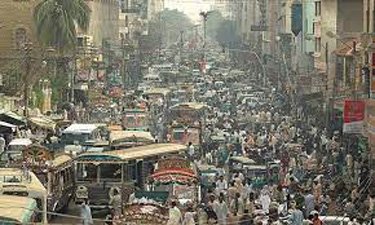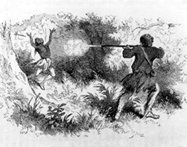Seeing the link to Samira Shackle’s book excerpt go by, I realized that I knew next to nothing about this city of nearly 20 million people.
I moved to Karachi in the aftermath of riots, arriving to smashed shop windows and the smell of burning tires. It was 2012 and the city had been engulfed by protests against a YouTube video that made offensive statements about the Prophet Muhammad. The city’s few remaining cinemas had been attacked, and churches had taken extra security precautions, lest the mob hold Pakistan’s Christians accountable for the crimes of the American filmmakers. The scale of destruction was disproportionate to the offence itself. I was a Londoner moving to my mother’s hometown, a place I had visited only once since childhood. This was an immediate introduction to the discontent that bubbled beneath the surface of the city, always ready to erupt into violence.
I walked out of the airport into a heavy, humid night and was collected by my aunt, my mother’s cousin, with whom I planned to stay. We got into the back of the car; up front was the driver. (This felt unnatural to me to begin with, although I knew that it was common for well-off families in Pakistan to employ a full-time driver; many companies do the same for their office staff.) Karachi is a web of flyovers and highways, the sides of the roads dotted with battered colonial facades, concrete monstrosities, improvised shacks and half-built shells of buildings. Ornate plasterwork sits below poorly constructed high-rises designed only to maximize the space.
To travel on these roads is to be confronted with the massive population of this heaving city. We drove through traffic sprawling into multiple lanes. Motorbikes, sometimes bearing up to five family members, wove in and out between the cars, and men clung to the tops and sides of minibuses. As we drove, my aunt dispensed some safety advice. If a man on a motorbike stops by your car window and flashes a gun, don’t ask questions, just hand over your cash and phone. Change your timings, routes and vehicles frequently to minimize the risk of kidnap. If you pass through a dangerous district, don’t stop—not even if someone crashes into you.
Over the following weeks, I realized why most of this advice was predicated on being in a car: travelling around the city was when Karachi’s wealthier citizens were most vulnerable to the violence that surrounded them. Like most affluent residents of the city, my relatives were somewhat insulated. They lived behind high walls, protected by 24-hour armed guards. Even the cafes and shops they frequented were surrounded by metal detectors and bored security guards with AK-47s slung over their shoulders. There was good reason for this. Karachi was in the throes of one of the worst outbreaks of violence it had seen since the 1990s. Every day, some 15 to 20 people were killed in targeted attacks by rival ethnic groups or political parties, and whole neighborhoods were frequently off-limits due to rioting or running street battles. But the city was so big that even as this was happening, life in the more affluent districts could go on more or less as normal.
The areas of Clifton and Defence, where most of my relatives and friends lived, formed a city within a city, their wide streets, lush greenery and palatial houses a world away from the urban warfare of Lyari or Orangi. Here, the backdrop of violence quickly became mundane: perhaps a day trip to the beach would be impossible due to a security alert, or dinner plans would have to be rearranged because of a citywide strike. For all Karachi’s vast sprawl, most of its citizens live in a tightly constricted geography, not venturing too far from their locale lest they stray into danger.
Each morning, I sat with my aunt in a marble-floored living room overlooking a luxuriant garden where blooming coral trees spilled over a pagoda. The pet parrot, who was loud and surprisingly vicious, squawked in the background, picking up the odd word from conversations. Tellingly, one of his favorites was tamasha, the Urdu word often used to mean “commotion,” referring to a protest or riot. Over breakfast, I would look through the English-language newspapers, reaching first for the Express Tribune. It published a crime map every day in its Karachi edition, under headings like “Shootings and raids” and “Mishaps and bodies found,” a half-page infographic mapping out the violence consuming areas of the city. I would skim through the daily accounts of targeted killings of political workers and gang battles, the latest convulsions in the multiple conflicts that have racked Karachi for decades. From the vantage point of the comfortable living room, the street war unfolding a few miles away felt unreal and distant, just a headcount on a page.
The violence had deep roots. Karachi’s history is one of migration and rapid expansion. In 1947, Karachi was a port city with a population of fewer than 500,000 people. Today, there are closer to 20 million, more than triple the population of London. When Pakistan was formed out of the bloody Partition of India, trainloads of Muslims crossed the border in search of a new homeland, arriving exhausted and brutalized. Karachi was the final stop on the train, and as the refugees were turned away from everywhere else, it was their destination by default. These migrants, who became known as Mohajirs, settled first in sprawling refugee camps and then took up the government jobs left vacant by the Hindus and Sikhs who had fled in the other direction.
My grandparents married in 1948, a few months after Partition; the wedding celebrations had to be scaled down because Mahatma Gandhi was assassinated that week. Soon afterwards, my grandmother left her home in a Muslim part of northern India to live with my grandfather’s family in Karachi. Immediately, she began to volunteer in the refugee camps that engulfed swathes of the city. Two years later, in 1950, my mother was born. Despite these harsh beginnings, as the capital of a new nation, Karachi was infused with a feeling of hope and possibility—Pakistan was a new country, forging a national identity, and this was the city at the center of it all. This was the Karachi that my mother and grandmother had told me about: a cosmopolitan place full of energy and action.
In the decades since Partition, Karachi has been home to a series of complex and ever-evolving conflicts, with sectarian and ethnic resentment mingling with politics and organized crime. First was the tension between the Mohajirs and the local Sindhi population. The Sindhis were broadly less educated and resented the newcomers dominating them in business and public sector jobs. The optimism that was Karachi’s mood music in the early days of nation-building hardened into mutual suspicion, hostility and aggression. In the 1970s, my grandparents and their four children—my mother, two aunts and my uncle—moved to the UK, making a new life among the tree-lined avenues of northwest London. It was after they left, through the 1970s and 1980s, that the tensions between Karachi’s different groups flared into riots and led to the formation of noxious ethnic political movements.
Later, people flooded into Karachi from Afghanistan, displaced by the war, and from Pakistan’s north-west and elsewhere in the country because of violence or natural disaster. These subsequent waves of migration followed the same pattern, with a growing number of ethnic groups fiercely competing for physical space and economic resources. Even today, when earthquakes or bombs, floods or gunfire have displaced people from their homes in Khyber Pakhtunkhwa or Balochistan, they still flock to Karachi, attracted by that sometimes arrhythmic but perpetually beating heart of economic promise. …
Compounding the pressure of multiple migrations and deep-rooted ethnic allegiances is the fact that the city can barely keep pace with its constant, dizzying expansion. Buildings, half-buildings and makeshift shacks have sprung up to accommodate the steady stream of newcomers. Services have not developed quickly enough. Vast areas of Karachi have no proper sewerage system, no connection to the mains water supply or electricity, and scarcely any police presence. Always ready to fill the gaping holes left by the state are criminal gangs, with mafias trading in these utilities as well as in weapons, extortion and drugs. Many of the gangs are intimately connected to political parties, which are active participants in the street wars that afflict their constituents. Most have militant wings that, at different points, have brutally intimidated opponents—through abduction, torture, even murder—and ties to the criminal gangs that for a long time ran the city. Extortion, after all, is a handy way to raise funds, while controlling the sale of land is an efficient way to shore up your voter banks.
Karachi’s politics have particularly high stakes, but they play out against a tumultuous national backdrop. Successive politicians and military rulers have sought to exploit the nation’s ethnic divisions for their own gain, the consequences of which are marked in blood on Karachi’s streets. Pakistan has spent almost half of its 70 years under military dictatorship, with successive elected governments overthrown by an army which plays a disproportionate role in public life. Even when civilian politicians are in power, the army and intelligence services continue to pull the strings. This means that many state institutions are weak and ill-equipped to meet the needs of a wildly expanding population. And the army is capricious, sometimes supporting violent movements, sometimes brutally suppressing them.
Hmmm. Huge teeming megalopolis with wealthy elite living in fortified compounds surrounded by impoverished masses living in poorly-serviced, unpoliced neighborhoods rife with crime and violence, the population made up of mutually hostile, mutually suspicious identity groups battling constantly for power, and the whole mess ruled over by a corrupt, unrepresentative, self-serving organized clique.
Why! Karachi sounds just like Chicago or New York, just a bit larger and a bit farther along in the direction the Cathedral and the democrat party’s politics are taking us.






Please Leave a Comment!